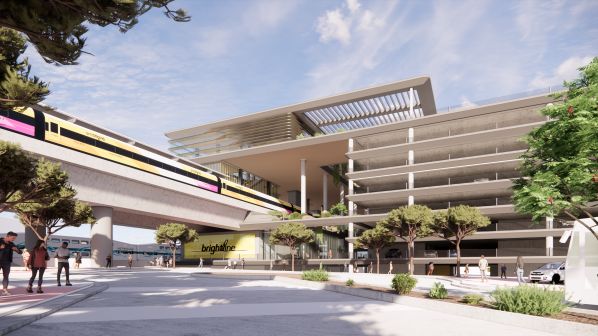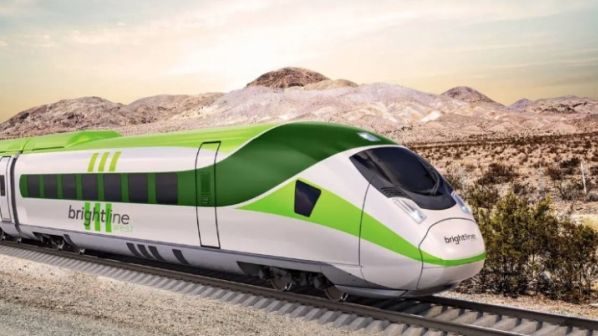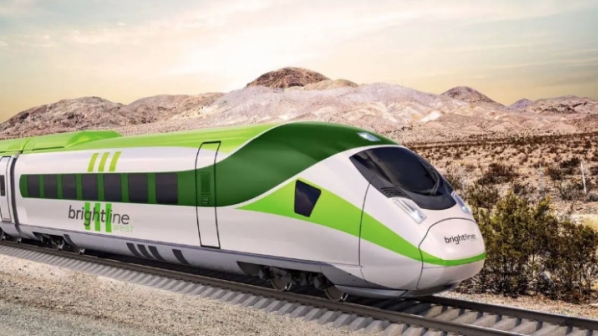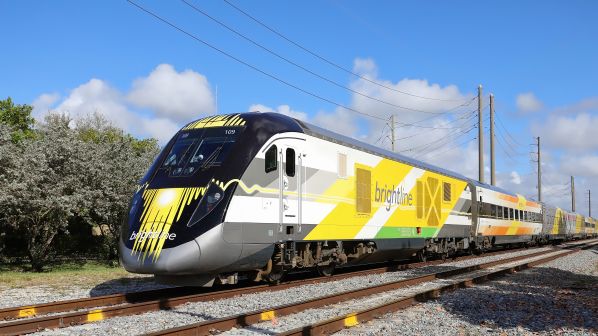THE environmental review and permitting process has been completed for the 78.4km Victor Valley - Rancho Cucamonga section of the proposed Brightline West high-speed line between Los Angeles and Las Vegas.
The US Federal Railroad Administration (FRA) has found that there would be no significant environmental impact from building this section of the high-speed line, which as with 96% of the Brightline West alignment would run within the median strip of the Interstate highway 15.
The environmental assessment for the Las Vegas - Apple Valley section of Brightline West was approved in 2011 and reviewed in 2020.
There would be two stations on the Victor Valley - Rancho Cucamonga section at Hesperia and Rancho Cucamonga. Environmental approval has already been granted for the station at Hesperia, where the Brightline West fleet maintenance facility would also be located.
Final design and construction of the Brightline stations and associated facilities at Hesperia and Apple Valley in California will be funded by a $US 25m Rebuilding American Infrastructure with Sustainability and Equity (RAISE) grant, made last month by the US Department of Transportation to San Bernardino County Transportation Authority.
Brightline West would have its Los Angeles terminus at Rancho Cucamonga, with high-speed services timed to connect with Metrolink commuter trains that would enable passengers to reach Union Station in downtown Los Angeles.
The journey time from Rancho Cucamonga to Las Vegas would be 2h 10min, with the journey via Metrolink from Union Station taking around 3 hours. High-speed services are expected to operate at hourly intervals every day.
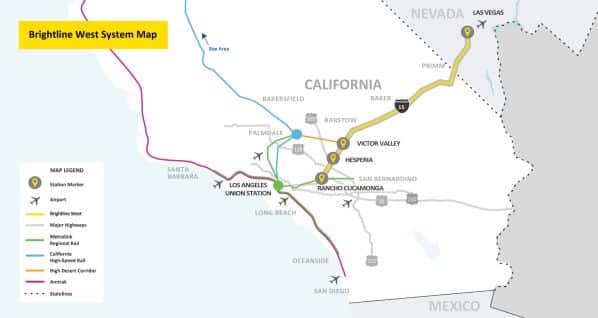
Running for a total of 348.8km, the high-speed line is expected cost $US 12bn to build. In April Brightline West and the Nevada Department of Transportation applied for $US 3.75bn in funding from the Federal-State Partnership for Intercity Passenger Rail Grant Programme, authorised by the Infrastructure Investment and Jobs Act.
The remainder of the construction cost would be met via tax-exempt bonds issued in both Nevada and California and private capital.
Construction is expected to start in the second half of this year and take four years to complete.
The fully electrified high-speed line is expected to remove over three million cars from the roads and save over 400,000 tonnes of CO2 every year.
According to economic studies, Brightline West will create over 35,000 jobs, including 10,000 construction posts and 1,000 permanent jobs in operations and maintenance. The project is expected to generate more than $US 10bn of economic benefit in California and Nevada.
“The FRA’s Finding of No Significant Impact confirms the environmental benefits of the project extending into Greater Los Angeles at Rancho Cucamonga,” says Brightline West president, Ms Sarah Watterson.
“Having permits and right of way are typically the highest barriers to success for large-scale infrastructure developments, and Brightline West’s tremendous progress here signifies why we are moving towards breaking ground later this year.”
For detailed data on high-speed projects around the world, subscribe to IRJ Pro.
